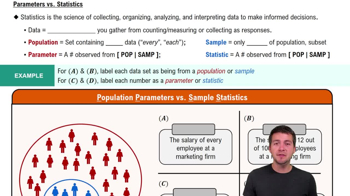Determine the level of measurement of the data set. Explain your reasoning.
The horsepowers of racing car engines
 Verified step by step guidance
Verified step by step guidance Verified video answer for a similar problem:
Verified video answer for a similar problem:


 2:13m
2:13mMaster Introduction to Statistics Channel with a bite sized video explanation from Patrick
Start learning